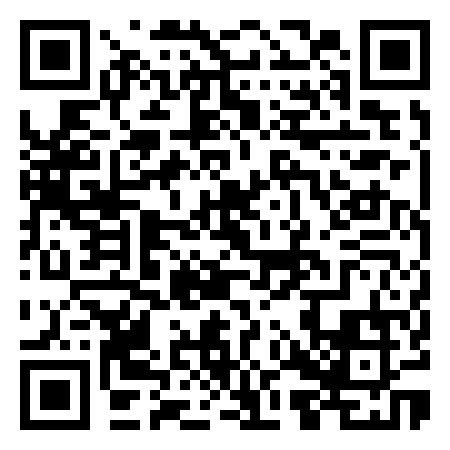จารึก
The Princess Maha Chakri Sirindhorn Anthropology Centre
จารึกเหรียญเงินทวารวดี (คอกช้างดิน 3)
จารึก
![]() โพสต์เมื่อวันที่ 13 ก.พ. 2550 13:59:58 ( อัพเดทเมื่อวันที่ 20 เม.ย. 2567 18:29:57 )
โพสต์เมื่อวันที่ 13 ก.พ. 2550 13:59:58 ( อัพเดทเมื่อวันที่ 20 เม.ย. 2567 18:29:57 )
ชื่อจารึก |
จารึกเหรียญเงินทวารวดี (คอกช้างดิน 3) |
ชื่อจารึกแบบอื่นๆ |
KCD97-0010 |
อักษรที่มีในจารึก |
ปัลลวะ |
ศักราช |
พุทธศตวรรษ 12 |
ภาษา |
สันสกฤต |
ด้าน/บรรทัด |
จำนวนด้าน 1 ด้าน มี 2 บรรทัด |
วัตถุจารึก |
เงิน |
ลักษณะวัตถุ |
เหรียญทรงกลมแบน ด้านหนึ่งมีจารึก อีกด้านหนึ่งมีรูปแม่วัวกับลูกวัว |
ขนาดวัตถุ |
เส้นผ่าศูนย์กลาง 1.73 ซม. หนา 1.30 ซม. หนัก 2.10 กรัม |
บัญชี/ทะเบียนวัตถุ |
สำนักงานโบราณคดีและพิพิธภัณฑสถานแห่งชาติที่ 2 สุพรรณบุรี กำหนดเป็น “KCD97-0010” |
ปีที่พบจารึก |
พุทธศักราช 2440 |
สถานที่พบ |
ในภาชนะดินเผาทรงคนโทขนาดเล็ก ขุดพบบริเวณโบราณสถานหมายเลข คชด. 7 ตำบลจระเข้สามพัน อำเภออู่ทอง จังหวัดสุพรรณบุรี |
ผู้พบ |
สำนักงานโบราณคดีและพิพิธภัณฑสถานแห่งชาติที่ 2 สุพรรณบุรี |
ปัจจุบันอยู่ที่ |
พิพิธภัณฑสถานแห่งชาติ อู่ทอง ตำบลอู่ทอง อำเภออู่ทอง จังหวัดสุพรรณบุรี |
พิมพ์เผยแพร่ |
เอกสารประกอบการสัมมนาโครงการสัมมนาประวัติศาสตร์ โบราณคดีเมืองสุพรรณบุรี “จากทวารวดีถึงสุพรรณบุรี : หลักฐานและข้อมูลใหม่ทางโบราณคดี” (กรุงเทพฯ : กรมศิลปากร, 2542), 104-155. |
ประวัติ |
ในเอกสารประกอบการสัมมนา โครงการสัมมนาประวัติศาสตร์ โบราณคดีเมืองสุพรรณบุรี “จากทวารวดีถึงสุพรรณบุรีฯ” อ. ก่องแก้ว วีระประจักษ์ ผู้เชี่ยวชาญพิเศษด้านภาษาโบราณ กรมศิลปากร ได้เขียนบรรยายไว้ว่า เมื่อวันที่ 3 กันยายน พ.ศ. 2540 ขณะที่เจ้าหน้าที่สำนักงานโบราณคดีและพิพิธภัณฑสถานแห่งชาติที่ 2 สุพรรณบุรี โดยการนำของนายเขมชาติ เทพไชย ผู้อำนวยการสำนักงานโบราณคดีและพิพิธภัณฑสถานแห่งชาติที่ 2 สุพรรณบุรี และนายสายันต์ ไพรชาญจิตร์ นักโบราณคดี 7 ว. กำลังดำเนินการขุดค้นศึกษาโบราณสถานหมายเลข คชด. 7 ในบริเวณพื้นที่โบราณสถานคอกช้างดิน ตำบลจระเข้สามพัน อำเภออู่ทอง จังหวัดสุพรรณบุรี เมื่อเปิดหน้าดินไปได้ลึกประมาณ 50-100 ซม. เจ้าหน้าที่ได้พบภาชนะดินเผาทรงคล้ายคนโท ภายในภาชนะมีเหรียญเงิน 9 เหรียญ แผ่นเงินเสี้ยว 2 แผ่น ก้อนเงิน และเงินแท่งตัดเป็นแว่นๆ ขนาดต่างๆ อีก 38 ชิ้น กับเหรียญสัมฤทธิ์ดำอยู่ที่ปากภาชนะอีก 1 เหรียญ เหรียญและแท่งเงินเหล่านั้น มีหลายขนาดอีกทั้งรูปลักษณะยังแตกต่างกันอีกด้วย บรรดาเหรียญเหล่านี้มีพิเศษอยู่ 3 เหรียญ เป็นเหรียญแบบเรียบ ขนาดเส้นผ่าศูนย์กลาง 1.2 ซม. เท่ากันทั้ง 3 เหรียญ แต่มีที่สำคัญคือลายนูนต่ำที่อยู่บนเหรียญทั้ง 2 ด้าน ด้านหนึ่งมีอักษรจารึก 2 บรรทัด อีกด้านหนึ่งเป็นรูปโคแม่ลูกยืนหันกลับทิศทางกับด้านที่มีอักษรจารึก |
เนื้อหาโดยสังเขป |
คำจารึกที่ว่า “ศฺรีทฺวารวตีศฺวรปุณฺย” หรือ “พระเจ้าศรีทวารวดีผู้มีบุญอันประเสริฐ” เป็นการยืนยันถึงการมีอยู่จริงของอาณาจักรทวารวดี ซึ่งสอดคล้องกับทั้งเอกสารจีนร่วมสมัยและโบราณวัตถุสถานที่พบในเขตลุ่มแม่น้ำท่าจีน-แม่กลอง-ป่าสัก ในประเทศไทย ส่วนด้านหน้าของเหรียญทำเป็นรูปแม่โคกับบุตรนั้น ศ. ดร. ผาสุข อินทราวุธ ได้อธิบายไว้ในหนังสือทวารวดี การศึกษาเชิงวิเคราะห์จากหลักฐานทางโบราณคดี ว่า “โค เป็นสัญลักษณ์พลังอำนาจด้านการผลิตของธรรมชาติ โดยพลังอำนาจด้านการผลิตของธรรมชาตินี้ สัมพันธ์กับคติการนับถือพระแม่ หรือ เทพีแห่งความอุดมสมบูรณ์ของพืชพันธุ์ธัญญาหาร และสัมพันธ์กับคติการบูชาคช-ลักษมี (เทพีแห่งความมั่งคั่งและความอุดมสมบูรณ์) สัญลักษณ์รูปแม่โคกับบุตร จัดเป็นหนึ่งในมงคล 108 ประการ และปรากฏบนตราประทับของกษัตริย์เมืองนคร ซึ่งเป็นรัฐอิสระที่ตั้งอยู่ทางภาคตะวันตกของอินเดีย ในช่วงพุทธศตวรรษที่ 9-10 จัดเป็นสัญลักษณ์ของความอุดมสมบูรณ์ของผลิตผลทางการเกษตรและปศุสัตว์ และการที่กษัตริย์ทวารวดีเลือกสัญลักษณ์นี้มาใช้บนเหรียญของพระองค์ ก็เป็นเครื่องยืนยันว่าพระองค์สามารถควบคุมธรรมชาติให้มีผลผลิตที่อุดมสมบูรณ์” เหรียญเงินที่มีจารึกลักษณะเช่นนี้ ปัจจุบันได้สำรวจพบแล้วในหลายพื้นที่ คือที่เมืองนครปฐมโบราณ เมืองอู่ทอง (จังหวัดสุพรรณบุรี) เมืองคูบัว (จังหวัดราชบุรี) เมืองคูเมือง (จังหวัดสิงห์บุรี) เมืองพรหมทิน (จังหวัดลพบุรี) เมืองดงคอน และเมืองอู่ตะเภา (จังหวัดชัยนาท) |
ผู้สร้าง |
ไม่ปรากฏหลักฐาน |
การกำหนดอายุ |
กำหนดอายุตามรูปแบบอักษรปัลลวะ อายุราวพุทธศตวรรษที่ 12 ซึ่งสอดคล้องกันกับ ชื่อ “ตว้อ-หลอ-ปอ-ตี่” (พ.ศ. 1172-1188) ในบันทึกของการเดินทางของสมณะเฮี่ยนจัง และ “ตู้-เหอ-ปอ-ตี่” (พ.ศ. 1214-1238) ในบันทึกการเดินทางของสมณะอี้จิง |
ข้อมูลอ้างอิง |
เรียบเรียงข้อมูลโดย : ตรงใจ หุตางกูร, โครงการฐานข้อมูลจารึกในประเทศไทย, ศมส., 2547, จาก : |
ภาพประกอบ |
ภาพถ่ายจารึกจาก : เอกสารประกอบการสัมมนาโครงการสัมมนาประวัติศาสตร์ โบราณคดีเมืองสุพรรณบุรี “จากทวารวดีถึงสุพรรณบุรี : หลักฐานและข้อมูลใหม่ทางโบราณคดี” (กรุงเทพฯ : กรมศิลปากร, 2542) |





